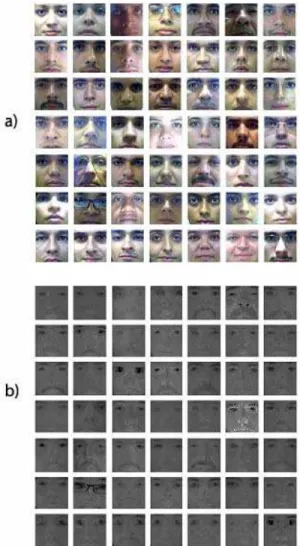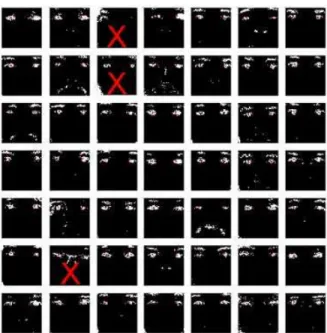Automatic eye localization in color images
Texto
Imagem

![Figure 5. Clustering algorithm, as proposed by MacQueen [16]. Initial cluster centers are randomly chosen at the start (a)](https://thumb-eu.123doks.com/thumbv2/123dok_br/15358613.563965/5.918.120.433.610.913/figure-clustering-algorithm-proposed-macqueen-initial-cluster-randomly.webp)

Documentos relacionados
The objectives of the present investiga- tion were: 1) to develop a computerized method for quantifying the relative exten- sion of segmental systolic endocardial mo- tion as
Considering these difficulties, this paper presents the evaluation of segmentation by artificial neural network (ANN) SOM to automatic detection of nodules contour in
Using sphere shaped regions of interest (ROI; radius 5 mm) centred upon the peak voxel within each area of interest, signal changes (contrast estimates in arbitrary units
In this paper, an RBF neural network was used as a classifier in the face and fingerprint recognition system in which the inputs to the neural network are
In line with this, artificial neural network technology of backpropagation neural network (BPNN), radial basis function neural network (RBFNN) and generalized regression
The output from the first stage allows us to define a region of interest (ROI) for the segmentation step, where we use random for- est classification to estimate the likelihood of
An Unsupervised Dynamic Image Segmentation using Fuzzy Hopfield Neural Network based Genetic Algorithm1. Amiya Halder 1 and Soumajit
This paper shows that GGAP-RBF has huge time complexity as compared to MLP and ANFIS. Moreover, GGAP-RBF does not out-perform MLP and ANFIS in Recall Rate. The paper also shows